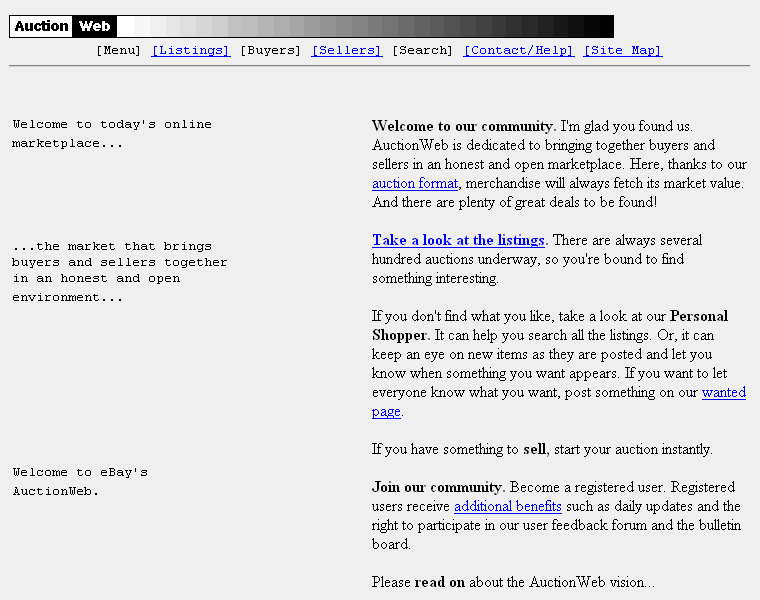How eBay Listened To Their Early Adopters and Built Long-Lasting Success
I recently read The Perfect Store: Inside eBay by Adam Cohen, a detailed history of my favourite way to waste spend money online…
The first version of eBay was called AuctionWeb, and it looked a bit like this circa 1996:

The book charts the company from its meagre beginnings as AuctionWeb to its place as a globally recognised multi-billion-dollar company. Unlike today’s startups the origin story wasn’t one of accelerators and venture capitalists but a tale that every startup should be looking to emulate: harnessing the power of the passionate early adopter.
The book gives focus to the various eBay users who are recognised as a massively important part of the company’s path to success. There was no complicated customer management software back then; the extent of analytics was a hit counter! eBay had real conversations with its early customers who had formed a passionate community. This shaped the product and also the brand with an emphasis on community and goodwill playing a key part of founder Pierre Omidyar’s hippy-esque vision for the site.
Staying ahead of the competition
Along the way the book describes the various tactics that eBay employed, particularly regarding growing the site and dealing with larger competitors, such as AOL, who the founding team were constantly scared of being usurped by.
eBay’s solution was to make sure that avid buyers and sellers who used the site were listened to and that the site was continually adapted based on their feedback.
Because of this eBay retained as much as 80% of the online auction share for many years. Competitors with large bank rolls came and went went but no-one could match them. The main reasons being that when sellers used these other sites there simply wasn’t the audience there to buy their goods. Buyers went to where the products were and they were all on eBay: the community won.
What can we learn?
The lesson from all of this? Well you can’t recreate eBay this precisely, it’s definitely not a “standard” startup (if there is such a thing). It came around in a different time and has had the rare privilege of being wildly profitable for its entire existence. However, we can learn a lot from the way it placed such importance on its core users.
Firstly you need to know who these users are. Have a plan to find them; they are the engaged ones.
Not everyone is going to want your product so be careful not to listen to people whose problem you are never going to solve. Lots of people will kick the tyres and give an off-the-cuff reason why they aren’t going to use you. Let them go.
The people you want to watch are the ones who do engage and who start coming back. You may not be perfect for them but there is something there for you to build on. Now you have them, treat them like eBay did. They aren’t just rows in your database, don’t just watch them on an analytics package. Listen to them in person, befriend them, care for them, embrace them!
For they hold the key to your startup’s success.
Related Posts
Picture this: your team finally nails a promising design direction only to get bogged down in another round of drawn-out reviews.
The work is strong. The feedback loop? Endless.
Suddenly, you’re in a holding pattern, waiting on decisions, chasing alignment, and explaining the same rationale three times over. It’s a common UX manager nightmare, especially in enterprise settings.
Picture this: your team finally nails a promising design direction only to get bogged down in another round of drawn-out reviews.
The work is strong. The feedback loop? Endless.
Suddenly, you’re in a holding pattern, waiting on decisions, chasing alignment, and explaining the same rationale three times over. It’s a common UX manager nightmare, especially in enterprise settings.